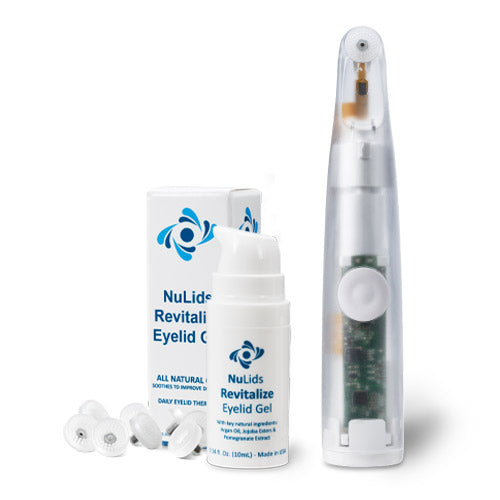An estimated 35 million people in the US harbor some form of dry eye disease (DED) whether evaporative dry eye (EDE) meibomian gland disfunction (MGD) or anterior blepharitis; but only 5 million are diagnosed.
Not all doctors routinely test for dry eye even though it is one of the most common reasons patients cite for visiting their eye doctor. Complicating matters, many people with dry eye have no symptoms.
DED is most prevalent among contact lens wearers, and it is a universal side effect of refractive surgery. Additionally, DED is a natural consequence of aging. Patients older than 70 are almost guaranteed to have EDE, MGD, or anterior blepharitis.
Dry eye not just a consequence of aging
In the past, DED was seen primarily as a problem of aging and the inability to produce enough tears. But new diagnostic techniques have shown that insufficient tear production is only responsible for about 15% of dry eye cases. Eighty five percent of dry eye arises from meibomian gland disfunction. MGD causes a decrease in oil secretions, which reduces tear breakup time and creates evaporative dry eye conditions.
We are seeing more dry eye across the board. A recent study of preadolescent teenagers found that half of them had signs of dry-eye disease, which may be attributable to time spent staring at screens. With more screen use by younger individuals, we are facing an impending epidemic of DED.
Current MGD treatments, such as thermal pulsation and gland expression, and IPL (Intense Pulsed Light) plus gland expression, work initially. But they fail over the long term if patients do not follow up with daily compresses and manual lid scrubs.
In my experience, patients stop their daily regimens because they don’t want to take the time. Unfortunately, in-office treatments are expensive and impractical for frequent repetition.
In addition to DED and MGD, we’re seeing more anterior blepharitis (AB) than ever before. For years, all I had to treat it with was warm compresses, lid scrubs, and foam. Satisfactory outcomes were rare.
The BlephEx in-office treatment marked a significant advance. In office micro-blephorexfoliation is effective in unblocking glands and remitting AB in some cases. But absent a consistent hygiene regimen, any gains are soon lost. Most patients fail to comply with their at-home regimens. Invariably, their blepharitis recurs within two weeks.
Some patients have reported to me that when their symptoms abated, they stopped their follow-up routines because they were too much trouble. Other patients became discouraged and gave up because they were not seeing results.
Self-administered daily hygiene with new device pays off
I recently introduced a new at home lid-hygiene device, NuLids, into my practice that has radically improved our dry-eye treatment results. NuLids is a self administered eyelid stimulator and biofilm remover. This massaging device consists of a rechargeable handpiece and a supply of daily disposable soft tips. To stimulate and clean upper and lower eyelids, the patient simply applies the device with a soft tip to their closed eyelids.
NuLids removes bacteria and desiccated skin from the eyelid margins; de-caps or opens meibomian gland orifices; breaks up stagnant meibum in the glands; and improves circulation.
After a brief training, we instruct patients to use it along with warm compresses every day, twice a day for a total of one minute (15 seconds per eyelid margin). We are seeing positive, sometimes dramatic, results with NuLids even when patients abandon their warm compresses.
Patient compliance undoubtedly helps generate positive results. However, it is the mechanical action of the device that keeps eyelid margins clean, glands open, and oil flowing, as can be observed in slit lamp examinations and reduced seborrheic symptoms.
NuLids provides better hygiene than manual lid scrubs because of the stimulating action, and because, for whatever reason (I have not surveyed my patients on this matter) patients use it consistently.
When I see my NuLids patients at their 30-day follow-up visits, all signs and symptoms of disease have significantly improved. Most who were previously symptomatic report feeling normal again—many for the first time in a long time. And, patients report the NuLids System to be comfortable and enjoyable to use. All have been very satisfied with their treatment progress.
Out-of-pocket cost offset by results,fewer medications, and fewer office treatments
NuLids is not yet covered by insurance or Medicare, so it’s cost, $319, is a significant out-of-pocket outlay. Some doctors may hesitate to offer it as a treatment option based on that cost. However, with NuLids, patients can discontinue their manual daily lid scrubs and very likely reduce and/or eliminate most of their need for expensive moisturizing drops and gels. And, if using their NuLids saves or postpones just one in-office lid exfoliation or thermal pulsation treatment, it has more than paid for itself in savings.
I tell all of my dry-eye patients that they have a chronic progressive disease and strongly advise them to not postpone treatment—even if they still feel normal. I have found NuLids is worth the investment, and my patients have as well.
One of my patients, a man in his 70’s, is a powerful illustration of how well NuLids works. He came to our office with the most severe anterior blepharitis I had ever seen. He had suffered with the condition for his entire life but had given up on getting meaningful help. Today, after a year of NuLids’ daily use, he has no redness, discharge, or seborrhea. His eyes are white and clear, and his eyelids are pristine.
Based on results like this and many others we are seeing in our practice, I am convinced that NuLids should be part of every MGD, EDE, and blepharitis treatment plan. Furthermore, our clinical experience fully supports the NuLids II Study findings.



